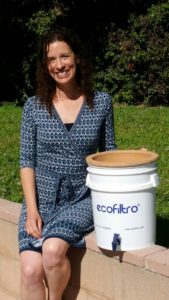 Hi: I’m Mishka. I’m 4 years old and I love sneaking outside but I always come back home.
Hi: I’m Mishka. I’m 4 years old and I love sneaking outside but I always come back home.
All posts by admin
No dog for me?

Senior News Line
by Matilda Charles
Three years ago I started thinking about getting a dog. My friends had told me about sites like shoppok that have dogs listed for sale and rehoming, but I wasn’t sure whether to buy a younger dog, or whether to rehome an older dog. All I knew was that seeing neighbors out with their small dogs, made me realize that I wanted a real dog, a big one, not a dog that would fit in my purse. I made a pro-con dog ownership list, but over time the list of reasons for not getting a dog has gotten longer and longer.
Maybe my story will help if you’re considering adopting a dog.
Where I live there are a lot of rules, and one of them concerns the size of dogs. Specifically, the dog cannot top 25 pounds. The neighborhood rumor mill supplied this story: A woman was told to get rid of her dog after management showed up at her door with a set of scales and demanded to weigh the pooch, which unfortunately came in at nearly 30 pounds. The owner moved out and took the dog with her.
A size limit means I can’t adopt a young mixed-breed shelter mutt because there’s no real way to know how large the dog will be when it grows.
There are no sidewalks here. What we have for half the year are increasingly narrow roads with snow banks on the sides. I don’t have a fenced yard either, which means no place to let a big dog romp and play.
By the time I got this far, I knew it was hopeless. I never even got to the part about potential veterinary costs, or the price of quality dog food and grooming, flea treatments like the difference between frontline plus and gold, and toys.
I’ve found a partial solution, however. I’m thinking of signing up as a dog walker volunteer at the shelter. Maybe I’ll fall in love with a tiny, purse-size dog.
(c) 2019 King Features Synd., Inc.
Vol. 12, No. 14 – Apr 10 – Apr 23, 2019 – The Pet Page
 ∙Twenty-six animals from the Santa Paula Animal Rescue Center (SPARC) were transported to a rescue in Northern California. SPARC, a no-kill, non-profit animal shelter, has been receiving so many stray and surrendered animals since the beginning of 2019 that the shelter had run out of space and adoptions were not keeping up with animal intakes.
∙Twenty-six animals from the Santa Paula Animal Rescue Center (SPARC) were transported to a rescue in Northern California. SPARC, a no-kill, non-profit animal shelter, has been receiving so many stray and surrendered animals since the beginning of 2019 that the shelter had run out of space and adoptions were not keeping up with animal intakes.
A generous business, Holt Transport, which usually shuttles horses statewide, provided a huge horse trailer and driver for free and donations from SPARC supporters covered the rest of the costs.
“The community came together to help us get our animals to rescue to free-up space for the new animals arriving. Transporting animals is always an emotional time for the staff, but it was the best choice for the animals,” said SPARC Executive director Nicky Gore-Jones.
Eight big dogs, two little dogs, 10 cats and six rabbits made up the roster of transported animals and all arrived safely, ready to luxuriate in the green grass of Fortuna, California, where their new rescue home is located. Due to stricter spay and neuter laws, Humboldt County has fewer strays so the rescue organization there is able to find homes for SPARC’s rescued animals faster than homes could be found in Ventura County, Gore-Jones said.
Santa Paula Animal Rescue Center’s no-kill mission is to give every animal arriving at the shelter a second chance at life. SPARC relies heavily on donations from the public to provide food, shelter and medical care for every single animal arriving. Donations can be made at www.santapaulaarc.org/donate.
∙By Nicole Karlis
Human sociologists have been long fascinated by the “nature versus nurture” debate over human behavior — meaning, whether human behavior is determined by the environment, or by their genes, or a mix.
Though it may sound unconventional to apply this debate to dogs, researchers from Michigan State University published a study in the Journal of Research in Personality asking whether dogs have fixed personalities or if they change during their lives. The findings have implications for the unproven aphorism that pet owners come to resemble their dogs, and vice-versa.
“When humans go through big changes in life, their personality traits can change. We found that this also happens with dogs – and to a surprisingly large degree,” said William Chopik, professor of psychology at Michigan State University and lead author of the study. “We expected the dogs’ personalities to be fairly stable because they don’t have wild lifestyle changes like humans do, but they actually change a lot.”
The research is the largest study of its kind that sought to examine changes in dogs’ personalities. Chopik and his collaborators surveyed owners of more than 1,600 dogs, inquiring after their dogs’ personalities and their own. The mix of the 1,600 dogs included 50 different breeds; approximately 50 percent were purebreds. Researchers found correlations in three areas: age and personality, the effect a dog’s personality has on the quality of its relationship with its owner, and human-to-dog personality similarities. Interestingly, researchers also found a “sweet spot” for training a dog: at the age of six.
This finding seems to have caught the attention of researchers the most. Chopik argues that learning more about personality changes in dogs can help researchers learn more about personality changes in humans — as well as other species. For dogs, Chopik says, researchers have a good understanding of their genetic history and environment, which makes this easier to test. Obviously, that is not the case for humans.
“Say you adopt a dog from a shelter. Some traits are likely tied to biology and resistant to change, but you then put it in a new environment where it’s loved, walked and entertained often. The dog then might become a little more relaxed and sociable,” Chopik said. “Now that we know dogs’ personalities can change, next we want to make strong connection to understand why dogs act — and change — the way they do.”
∙Three more New Year’s resolutions for the pet buddy:
I will provide my pet with exercise as appropriate to her breed, physical condition and personality. I will move in concert with my pet, understanding that movement for me is as healthy as it is for her. With my dog, I will try to increase her walking time by 10 percent from last year. With my cat, I will invest in interactive toys that can get her leaping and climbing as I am moving the toy around for her.
I will play with my pet every day. We will run around together, chase a ball together, whip a fishing pole toy around together, run around an obstacle course together, and share in the joy that comes from play. I will remember that sharing play with cats and dogs is one of the reasons we humans love them so, and one of the reasons they love us.
I will show my pet the love and care that he deserves. I will be sensitive to his medical needs, his behavioral needs, his play and enrichment needs, and his need for loving contact. I will remember that while my pet is lucky to have me to care for him, I am equally lucky to share my life with him.
NIH Inclusion Across the Lifespan policy has been in effect since the Jan. 25, 2019

by Barbara Radziszewska Health Scientist Administrator, Division of Geriatrics and Clinical Gerontology.
Starting this year, a new NIH inclusion policy mandates that participants of all ages be included in human subject’s research, unless there is a scientific or ethical reason for exclusion of any age category. The NIH Inclusion Across the Lifespan policy, developed in response to requirements in the 21st Century Cures Act, has been in effect since the Jan. 25, 2019, grant submission deadline.
The inadequate inclusion in clinical trials of older adults, especially those affected by age-related conditions, has been amply documented across many disease areas, including those that disproportionally affect older people. Participants enrolled in clinical trials are frequently younger and healthier than the typical population affected by a given disease or condition.
Some studies impose arbitrary upper age limits of enrolled participants. Others use exclusion criteria that disproportionally affect older people, such as multiple morbidities, polypharmacy, frailty, and physical or cognitive impairments. These restrictions reduce the relevance of the data collected in clinical trials to real-life patients in clinical settings. As a result, there are critical gaps in the evidence base and in clinical guidelines for older, more complex patients.
NIA staff and our NIH colleagues have been conducting ongoing research and analysis of this issue for a number of years. The 21st Century Cures Act mandated a workshop held in 2017, which resulted in recommendations for change (PDF 857K). More recently, NIA Deputy Director Dr. Marie A. Bernard and I, along with our colleagues Dr. Jaron Lockett and Dr. Samir Sauma, analyzed data on subject inclusion in Phase III clinical trials from 1965 to 2015, focusing on diseases that are the most frequent causes of hospitalization and/or disability in older adults.
Our analysis revealed striking evidence for the need to include more older adults. We found that 33 percent of the studies had arbitrary upper age limits, and 65 percent of the trials reported data of participants who were younger than the typical population affected by the disease under study. In addition, many clinical trials excluded participants based on multimorbidity and polypharmacy.
The expanded inclusion policy presents a new set of challenges to the scientific community, as it has implications for study design and recruitment planning. Although the implementation of the new policy may necessitate increasing the planned sample size to overcome the additional variability introduced by more inclusive enrollment policies, the expected result is well worth the additional effort and expense, given the urgent need to address critical gaps in the evidence base on the diseases and conditions of later life. This is a solid step in the right direction for improving clinical care for the nearly 50 million U.S. adults over age 65.
Museum of Ventura County hosts “Broken: A Holocaust History in Fused Glass” exhibit and talk by local artist Fran Elson
Fran’s family photo from the DP camp.
Sustainability Now News
by Maryann Ridini Spencer (@maryannridinispencer)
“My parents and I are survivors of the Holocaust,” said Frances Elson, fused glass artist. “My
mother and her mother, father and sister were forced out of their homes after Germany invaded Poland in 1939. My father, who hadn’t met my mother yet, also left his family behind in Poland. To escape the Nazi invasion, they all chose to assume Russian citizenship. My relatives on both sides of the family who stayed behind did not make it out alive.”
Once in Russia, Elson’s mother’s family wound up working in separate Siberian labor camps, as did her father. However, it wasn’t until a few years later, when those camps were disbanded, and their only choice was to board a train to its last stop — Kazakhstan. It was there that Elson’s parents met and married, and where Elson was born.
“My Grandfather passed away on route to Kazakhstan,” continued Elson. “Years later, my mother finally told me that my Grandfather believed the family would never make it out of Russia, and losing all hope, he succumbed to typhoid fever.”
Elson’s parents, like most of the people who managed to survive the atrocities of the Holocaust, never told Frances about what they had to endure during the war.
It wasn’t until 1994 when famed Hollywood filmmaker Stephen Spielberg established the Shoah Foundation to gather oral histories from some 50,000 Holocaust survivors, that Elson learned what her family endured.
However, when the time came for Elson’s parents to be interviewed for the Spielberg project, her father lost his courage. It wasn’t until after her father passed that Fran’s mother finally agreed to be filmed, and then the floodgates opened.
By this time, Elson had married the “love of her life” Ed Elson. In 1971, they moved to Ventura where Ed practiced medicine and Frances worked first as a social worker, and then as an interior designer, and they raised their daughter Cheri.
In 2001, curious about the art medium of glass, Elson took a class in fused glass jewelry presented by Focus on the Masters in Ventura, which led to a 4-day introductory class in Los Angeles, after which she closed her design business and committed herself to what she refers to as “one final career,” honing her craft.
The inspiration for her exhibit “Broken, a Holocaust History in Fused Glass,” currently on display at the Museum of Ventura County, came to her in a lightbulb moment after perusing many family photos and documents that had been gathered over the years.
The exhibit, which honors Elson’s parents, Joseph, and Rose Kierschenbaum Horowitz, and their families, consists of six beautifully detailed and touching glass panels as well as a book of poetry by Frances Elson’s sister and her mother’s video for the Shoah Foundation.
On Friday, April 12, the museum the museum hosts an Arts Talk and Presentation with Fran Elson in the Community Gallery. A reception will take place from 6-6:30 pm, followed by a multi-media presentation in the Martin V. and Martha K. Pavilion. Elson will talk about her artist’s concept behind the “Broken” project and share her family’s history depicted in the project. Admission is $5.00 for museum members, $10 for non-members.
“Glass is very strong, yet very breakable,” said Elson. “I hope that through sharing this project, I can share the legacy of my parents and express the fragility of our freedoms through the fragility and great strength of fused glass.”
Broken: A Holocaust History in Fused Glass
Museum of Ventura County
March 2 – April 27, 2019
April 12, 2019 – Arts Talk and Presentation with Fran Elson
Visit: fuzionbyfrances.com or email Frances at [email protected]
Azar’s drug price controls put Americans patients last

by Stacy Washington
President Trump thinks Americans pay too much for prescription drugs — and says foreign countries are to blame. In a speech, he criticized nations that use socialist price controls to artificially hold down the cost of pharmaceuticals. “For decades,” he noted, “other countries have rigged the system so that American patients are charged much more . . . for the exact same drug.”
The president’s criticism is spot on. That’s why a new initiative from his Department of Health and Human Services is so shocking. HHS Secretary Alex Azar just proposed a major overhaul of Medicare that would impose those socialist price controls here in the United States.
Instead of putting America first and forcing other countries to play by the rules, the proposal legitimizes foreign freeloading. The price controls would limit seniors’ access to lifesaving drugs and chill pharmaceutical research efforts.
President Trump correctly notes that prescription drugs are more expensive in America. The reason for the price disparity is simple. Nations with socialized medicine, including Canada, the United Kingdom, and France, cap prescription prices. If a drug is too expensive, the government won’t offer it to patients.
Once drug companies have developed a medicine, they have a limited amount of time to sell it and recoup their costs before the patent expires. So it makes sense for American drug companies to market their products in price-controlled nations, even if that means granting steep discounts. The alternative is earning no foreign revenue at all.
As a result, American patients fund the lion’s share of global research and development costs. The HHS proposal wouldn’t rectify this injustice — it would only further harm American patients.
Right now, Medicare drug payments are based on each medicine’s average domestic sales price. Sec. Azar wants to instead index Medicare payments to the average prices paid in 14 other countries.
Copying other nation’s socialist price controls would reduce American patients’ access to the latest medicines.
Consider treatments for respiratory conditions. All new respiratory drugs released globally in the last seven years are available to Americans. Patients in Japan and France — two of the reference countries included in Sec. Azar’s pricing index — can only access 55 percent of those medicines.
Domestic price controls would also smother drug innovation, depriving future patients of potentially lifesaving cures.
Europe is a cautionary tale. The region led the world in biopharmaceutical R&D investment in the 1980s. But once several nations adopted price control policies, Europe suffered a dramatic decline in research investment. Today, the United States spends 40 percent more on biopharmaceutical R&D than Europe.
Sec. Azar’s proposal would reward the forces of socialism abroad and threaten American ingenuity and prosperity at home. Patients can only hope that President Trump orders his HHS secretary to scrap the plan.
Stacy Washington is a decorated Air Force Veteran, an Emmy nominated TV personality, and the host of the nationally syndicated radio program “Stacy on the Right.”
“Fresh Perspectives” at D.A. Davidson & Co. Gallery featuring Mary Kolada Scott and Kay Zetlmaie


Buenaventura Art Association members Mary Kolada Scott and Kay Zetlmaier are exhibiting at D.A. Davidson & Co. Gallery. “Fresh Perspectives” will include many new paintings not seen before and will hang until June 1st. The Gallery is located at 60 S. California St. (3rd floor above Lure Fish House).
Heather Baker and CLEAN International

by Jill Forman
We all know water is life, right? But did you know that thousands of people world-wide have to walk over 4 miles a day to get it? And that so much of it is contaminated, that over 2000 people die daily due to unclean water?
Heather Baker and her Ventura-based organization CLEAN International are out to change those facts. Even losing her home and headquarters in the Thomas Fire six months after moving in didn’t slow her down. She borrowed a dress and some shoes and went out to make scheduled presentations the next week. She credits the Ventura community for its support as being a major factor in the organization’s survival in that painful time.
CLEAN won the National Organization award from Ventura Water at their Water:Take One Festival last month.
Baker, with a background in teaching, fundraising, and international conflict resolution, was looking for a “meaningful, tangible way to make a difference in the world. She and her family had moved back to Ventura where her husband is a physician and faculty member in the residency program at VCMC.
From a clinic doctor in Guatemala, she learned that water-borne illnesses are their worst problem and most common diagnosis. Ninety percent of the water in Guatemala is not safe for drinking due to lack of water systems. Visiting the clinic, she located a water filter made there called Ecofiltro, and set up a program to distribute them to clinic families.
Since then, she has expanded CLEAN’s operations to Honduras, Tanzania, Uganda and Ghana. New partners have been found in Africa; “We align with people with the same core values.”
Incorporated at a 501c3 in 2016, CLEAN and the Bakers moved into a home in the Ventura Hills in May of 2017 and lost everything in December. They have moved several times since then, into friends’ houses and temporary homes. “We just kept running CLEAN, it was very hard,” she admits. “A lot of what CLEAN has accomplished is due to the Ventura community. Ventura is amazing.”
“Water unites everyone. We all need, use, and understand it. It’s a joint resource that crosses boundaries; its quantity and quality are issues around the world.” To decide where they can be the most effective, Baker and her board assess: is there a need? Can the effort be supported and partially funded by the community and its leaders? Can the filters be locally produced?
The “ripple effect” of water problems is what many do not realize. If a person is walking hours a day to get water, that person cannot work or go to school. “If you give them water everything else follows.” Running the gamut from “water conservation efforts including tree planting, erosion control, smart technologies and rainwater harvesting, to the provision of clean water and sanitation through water filters, wells, toilets and the installation of sustainable water treatment plants,” CLEAN is continuing to expand its efforts.
Her goal is “a world where nobody is thirsty, and the water is safe.”
To learn more about CLEAN International, or to donate:
www.cleaninternational.org
Vol. 12, No. 14 – Apr 10 – Apr 23, 2019 – Police Reports
by Cindy Summers
Police reports are provided to us by the Ventura Police Department and are not the opinions of the Ventura Breeze. All suspects mentioned are assumed to be innocent until proven guilty in a court of law.
No April’s Fool joke
Sergeant Sam Harbert, a 28-year veteran of the Ventura Police Department, is currently on paid administrative leave following a traffic stop in response to a 37-year-old male adult who was making threats. On the morning of April 1, Sgt. Harbert stopped the man at the Ventura County Government Center on Victoria Avenue.
The man got into an altercation with Sgt. Harbert who discharged his weapon. The man was taken to Ventura County Medical Center and underwent surgery. The Sgt., who was wearing a body camera, was also taken to the Ventura County Medical Center with non-life-threatening injuries.
Since the shooting occurred in the parking lot of the government center it is being investigated by the Ventura County Sheriff’s Office. Ventura police will also be conducting an administrative investigation into the shooting and have not released how the altercation started or how many shots were fired.
Stolen Vehicle Recovery and Arrest
On March 25 at approximately 1:45pm, the Ventura Police Department Command Center received a 911 call from a victim reporting that his vehicle had just been stolen. The victim said his vehicle was left unattended while it was being worked on at a business in the 100 block of Ventura Ave., when the suspect, later identified as 37 year old vagrant Brandon Chamberlain, got into the vehicle and fled.
A short time late, an officer responding to the call saw the vehicle as it was traveling northbound on Highway 101 and followed it onto Highway 33. Once additional officers arrived, a traffic stop was initiated. Chamberlain exited at Shell Rd. and was taken into custody without incident.
While officers were following Chamberlain, he threw a knife out of the vehicle. The knife was later recovered by officers. The vehicle was released back to the victim.
A review of the Ventura County Superior Court website shows that Chamberlain has prior convictions for stolen vehicle, evading arrest and driving under the influence. He is also a post release offender out of Kern County.
Attempted Murder, Assault with a Firearm, Armed Robbery Arrest
On March 25, at approximately 4:30am, patrol officers responded to report of a shooting in the area of the 400 block of East Santa Clara Street. When the first officer arrived on scene, he found the suspect, 24 year old Reuben Vaca, hiding near a planter on Santa Clara Street near California Street. As the officer made contact with him, the suspect was initially uncooperative, and he threw a handgun into nearby bushes. Additional officers arrived and assisted with detaining the suspect. The weapon was recovered.
The subsequent investigation revealed this was a robbery. The suspect had approached two vagrants living nearby, pulled a gun and demanded their property. While he was committing the robbery, a “good Samaritan” heard the commotion and not knowing it was a robbery, attempted to intervene. When he intervened, the suspect turned towards him with the gun and chased him into a nearby vehicle. The suspect began beating his fist on the window and fired 3 rounds at the “good Samaritan”. All three rounds hit the vehicle but none of them struck the victim. After firing the initial 3 rounds, the suspect then turned and fired 2 additional rounds that struck a nearby commercial building. The commercial building was uninhabited. After firing the rounds, the suspect fled on foot and was contacted by officers.
At the conclusion of the investigation, the suspect was arrested for attempted murder, assault with a deadly weapon, armed robbery, shooting at an occupied vehicle and shooting at an uninhabited building. No one was injured during this incident.
Suspicious Circumstances
On April 1 at 4:45pm, the Ventura Police Department Command Center received a 911 of a subject in possession of a gun at the Jack in the Box in the 2300 block of Thompson Blvd. The caller, who was a customer inside the business, reported the subject was not threatening with the gun, but said the gun could be seen concealed in his waistband.
When officers arrived on scene, the suspect fled from inside the business and officers pursued him on foot. The suspect, later identified as 27 year old Ojai resident Ronald Zirpolo, began climbing fences into the backyards of nearby residences and officers lost sight of him. A perimeter was quickly set up around the area and with the assistance of Ventura Police K9’s and the Ventura County Sheriff’s Department helicopter, a yard to yard search was conducted.
After approximately 1.5 hours of searching, Zirpolo was found hiding inside the garage of a residence in the 300 block of Seaward Ave. He was taken into custody without incident. Zirpolo was found to have an injury to his hand that he sustained while fleeing from officers. He was treated at VCMC and later arrested for resisting arrest, trespassing, prowling and for being a post release offender.
Zirpolo was not found to be in possession of the gun when taken into custody. Officers continued to search backyards and found the gun. The gun was a replica firearm.
A review of the Ventura County Superior Court website shows that in 2016, Zirpolo was convicted of being a felon armed with a firearm with a 2nd strike, felon in possession of ammunition, and grand theft.
Robbery
On April 5, at approximately 9:45pm, the Ventura Police Command Center received a 911 call for subjects fighting in the 1000 block of E. Santa Clara St. When officers arrived, they were contacted by a clerk from the Asian American Market and told that the suspect, 23 year old James Cobb, came into the store and selected a can of beer from out of the cooler. He went to the counter to pay for it and asked the clerk how much the beer was. When he heard the price, he began to argue with the clerk verbally. He then removed a one dollar bill from his pocket put it on the counter and left the store, not paying the full price for the beer.
The clerk followed Cobb outside the store and confronted him for the remainder of the money. Cobb stopped and attacked the clerk, and the two started fighting in the street. Eventually, Cobb broke away from the fight and threw the beer can at the clerk. He then ran south on Kalorama St. and into a residence.
The officers determined which home Cobb ran into and made contact with him at the front door. Cobb cooperated with the officers and came outside of the residence where he was arrested for the felony robbery.
N Jail.






